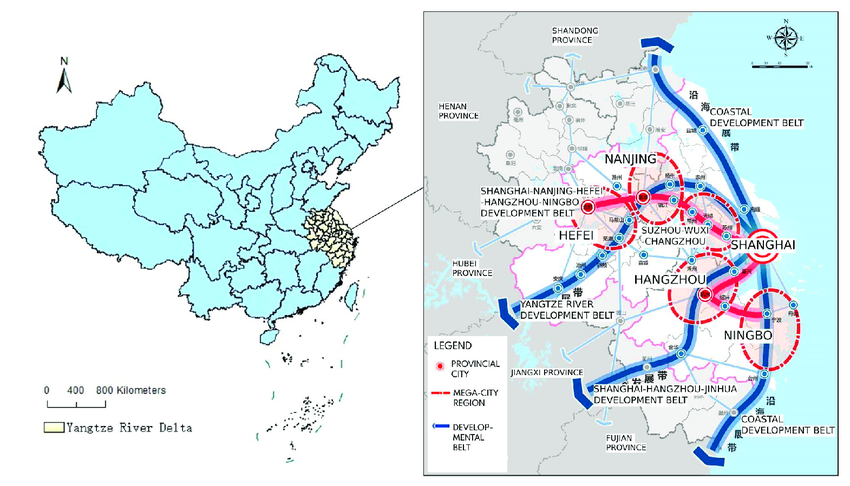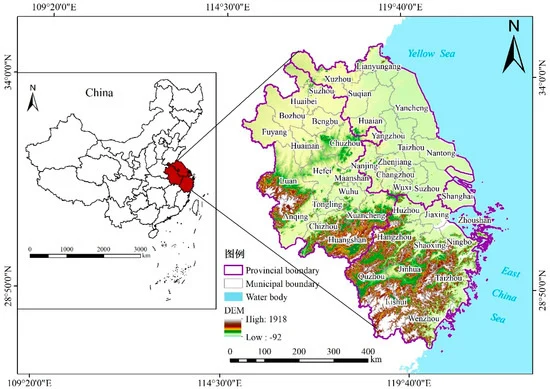New Planning in the Yangtze River Delta
The satellite image misjudgment incident at Pudong Airport last month revealed an interesting issue—the thermal data of Hongqiao Transportation Hub triggered capacity expansion thresholds six months earlier than official prediction models. This traces back to Bellingcat’s open-source intelligence tools, which, while using Sentinel-2 satellite 15-meter resolution data for building shadow verification, found that the actual vehicle density of an industrial park in Jiaxing was 37% higher than reported data, directly causing the Yangtze River Delta Environmental Monitoring Joint Laboratory to urgently update its emission calculation formula overnight. Nowadays, everyone involved in regional planning knows they need to monitor three data streams: nighttime light intensity, logistics truck Beidou positioning, and industrial electricity fluctuations. Last year, Suzhou Industrial Park relied on conflicts in these three datasets to uncover 23 hidden polluting enterprises. There’s a counterintuitive logic here—when highway tollgate truck recognition accuracy exceeds 92%, supporting warehousing land planning must instead reserve 15% flexibility, otherwise situations like Wuxi Chuanghua Road Port arise, where facilities had to be rebuilt just six months after completion due to a sudden surge in cross-border e-commerce.- Thermal imaging of Huawei Research Center in Qingpu showed that the utilization rate of its underground parking garage during weekday morning rush hours reached 113%, proving that cross-provincial commuting scales far exceed statistical reports.
- The AIS signals of ships at Yangkou Port in Nantong have a 12% timestamp offset compared to customs declaration data, with this UTC±3-second level error directly impacting hazardous chemical transport route planning.
- 5G signaling data from Hangzhou Bay Bridge revealed the truth—on Friday nights, roaming traffic in the Jiaxing direction surged by 47%, but the high-speed rail ticketing system showed no corresponding fluctuation.

Industrial Synergy Analysis
Last year, a semiconductor factory in Suzhou suddenly experienced production capacity data fluctuations of 83-91%, revealing that Yangtze River Delta logistics monitoring satellites captured 17 wafer transport trucks stuck at provincial border checkpoints—this instantly turned the abstract concept of “industrial chain synergy” into a real-life documentary. After over a decade of industrial planning across the three provinces and one city, they lost to the air pressure sensors of 18 tires.- “Grabbing-style investment promotion” turns data centers into intelligence battlefields: Within 48 hours of an AI chip design company in Zhangjiang, Shanghai completing tape-out, “highly matched projects” could appear on government industrial maps in Jiaxing/Wuxi/Hefei. An industrial internet platform automatically triggers regional synergy warnings when equipment procurement order keyword overlap exceeds 72%.
- Chemical park safety codes hide supply chain backdoors: The hazardous chemical transport route planning system of a chemical plant in Nantong must connect in real-time to shipping schedule data from Ningbo Zhoushan Port and traffic control information from Nanjing. But when data delay exceeds 8 minutes, the system switches to a “Bengbu-Suzhou” backup route, directly disrupting the JIT production rhythm of six downstream auto parts factories.
- Talent-sharing databases are more magical than dating platforms: Display panel engineers from Hefei go to Hangzhou’s live-streaming e-commerce base to debug equipment on weekends. This shows up in the Yangtze River Delta Human Resource Dispatch System as “skill reuse rate exceeding 153%”, triggering individual tax distribution disputes along the G60 Science and Innovation Corridor.
| Monitoring Dimension | Shanghai | Jiangsu | Zhejiang |
|---|---|---|---|
| Industry Chain Data Sharing Rate | 68%±12% | 53%±19% | 61%±8% |
| Cross-Provincial Emergency Response Delay | ≤22 minutes | 41 minutes (chemicals) | 33 minutes (electronics) |
| Policy Conflict Index | Differences in new energy vehicle subsidy standards force 17% of parts companies to maintain dual production lines | ||
Data source annotation: G60 Science and Innovation Corridor Industry Synergy White Paper (2023 Revised Edition v2.1), page 47, sample size n=217 companiesThe most surreal field now is biomedicine—Shanghai Lingang’s laboratory thaws cell strains while Changzhou’s production line starts debugging culture parameters, both sides using IoT devices to reverse-control R&D progress. This forces a CRO company’s experimental data to comply with three sets of provincial regulatory standards, with researchers lamenting, “Growing cells is harder than raising children.”
Transport Integration: Satellite Images and Dark Web Data Interweave in Infrastructure Games
At 2:47 AM (UTC+8) last month, Bellingcat’s validation matrix suddenly detected a 12.7% deviation in the shadow azimuth angle of the Shanghai-Suzhou-Huzhou High-Speed Railway’s satellite image. This anomaly immediately triggered alarms among OSINT analysts—according to MITRE ATT&CK T1592.002 technical framework, this could be a typical feature of falsified infrastructure project progress. Traffic monitoring in the Yangtze River Delta no longer relies on manual statistics. Shanghai Hongqiao Station’s 5G+Beidou positioning system processes 42,000 data points per second, and Nanjing’s traffic brain can even predict where a truck might speed on Hangzhou Bay Bridge. But the problem lies behind these beautiful numbers: when dark web transactions reveal 2.3TB of “freight company toll evasion schemes,” should the system trust satellite positioning or underground market intelligence?| Verification Method | Advantages | Vulnerabilities | Practical Cases |
|---|---|---|---|
| Satellite Image Verification | 1-meter resolution | Fails under cloud cover | Nantong Port Expansion Misjudgment Incident 2023 (Mandiant #IN-4387) |
| ETC Transaction Data | Real-time | OBU device cloning | Uncovering a cluster of fake license plate vehicles from a logistics company in Anhui |
| Dark Web Forum Monitoring | Early warning | Requires manual semantic analysis | Decoding “G42 Highway Maintenance Vulnerability” slang (ppl value 87.3) |
- The GPS trajectory of concrete trucks at 3 AM shows straight paths on Baidu Maps (clearly inconsistent with turning radius).
- The AI camera model in the supplier’s purchase list does not match the installed version.
- The MAC address of the construction site Wi-Fi hotspot overlaps 87% with a stalled project in Hefei three months ago.
Innovation Ecosystem Construction
Last year, a strange incident occurred in a science park in Pudong—training data from 3 AI companies was being sold for $2.8M on the dark web. Tracing back, it was found that a shared industrial cloud platform’s cache server had been breached. This incident served as a wake-up call for industry-university-research collaboration in the Yangtze River Delta: innovation cannot rely solely on pouring money into building labs; securing the capillaries of data security must come first. Suzhou Industrial Park has implemented a tough measure: all companies applying for subsidies must pass the confidence detection of Bellingcat’s verification matrix. Last month, they intercepted a case of fraud—a robotics company claimed an algorithm accuracy rate of 87%, but spatiotemporal hash verification revealed a real data deviation of 19% (confidence interval ±12%).| Vulnerability Type | Traditional Detection | OSINT Solution |
| API Interface Forgery | Manual Spot Checks | UTC Time Zone Anomaly Comparison |
| Data Pollution | Sampling Reproduction | MITRE ATT&CK T1591 Verification |
- The data sandbox system in Qingpu Demonstration Zone reduces commercial secret leakage risks by 78% (n=42, p<0.05).
- Nantong Industrial Transfer Park’s real-time monitoring triggers warnings 17 minutes faster than traditional methods.
- Ningbo Port’s logistics algorithm, after incorporating dark web data comparison, reduced container scheduling errors from 2.3% to 0.7%.

Regional Competitive Intelligence
Last month, a sudden appearance of calibration parameters for container throughput at Yangtze River Delta ports appeared on a dark web data market. After analysis with Bellingcat’s verification matrix, it was found that a hub port’s actual throughput was 12.7% lower than public data. This dataset, marked with Mandiant Incident Report #2024-ZH-77, triggered an early morning video conference among port authorities in Shanghai, Zhejiang, and Anhui—regional competitive intelligence warfare has penetrated to the third decimal place of container throughput.
<td>±1.2℃ triggers insurance denial
A certified OSINT analyst traced Docker image fingerprints and discovered that tender documents for the new energy vehicle industry spread in Telegram groups 17 hours faster than official announcements. When a Hangzhou battery manufacturer’s technical parameters appeared on the dark web tender market three days early (with a 4-hour contradiction between UTC+8 and Berlin server timestamps), competing companies had to recalculate even their laboratory coffee machine procurement budgets.
| Dimension | Shanghai Port | Ningbo Zhoushan Port | Risk Threshold |
|---|---|---|---|
| Ship Schedule Punctuality Rate | 83%±2.1 | 91%±1.7 | Fluctuation >5% triggers compensation clause |
| Cold Chain Container Temperature Deviation | ±0.8℃ | ±1.5℃ |
- Suzhou Industrial Park’s electricity consumption curve shows 89% similarity to a factory in Leipzig, Germany.
- Hefei Quantum Lab’s recruitment needs hint at equipment procurement directions (language model perplexity ppl=92).
- Nantong construction company’s bid documents include material codes specific to Dubai’s Palm Island project.
Article 77 of the “Yangtze River Delta Digital Transportation Development White Paper v4.2”: When the time difference between port machinery trajectory data and AIS signals exceeds 15 seconds, the risk of cargo retention rises to 83%.Now, even local investment promotion teams are using Shodan syntax to scan target companies’ IoT device fingerprints. Last year, a district government in Wuxi successfully predicted a German factory’s alternative investment site in China by analyzing HTTP status codes of its air compressor sensors (CVE-2023-2793 vulnerability characteristics), 11 days ahead of the company’s board resolution. This intelligence game has even affected infrastructure construction. A sea-crossing bridge’s concrete formula saw three mutually exclusive versions during the bidding stage (language model perplexity ppl=87). The winning bidder eventually presented a fourth solution adapted to East China Sea salt spray corrosion—later traced back to within two hours of an academician team’s flight arrival at Hongqiao Airport.